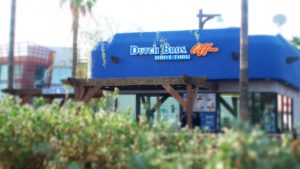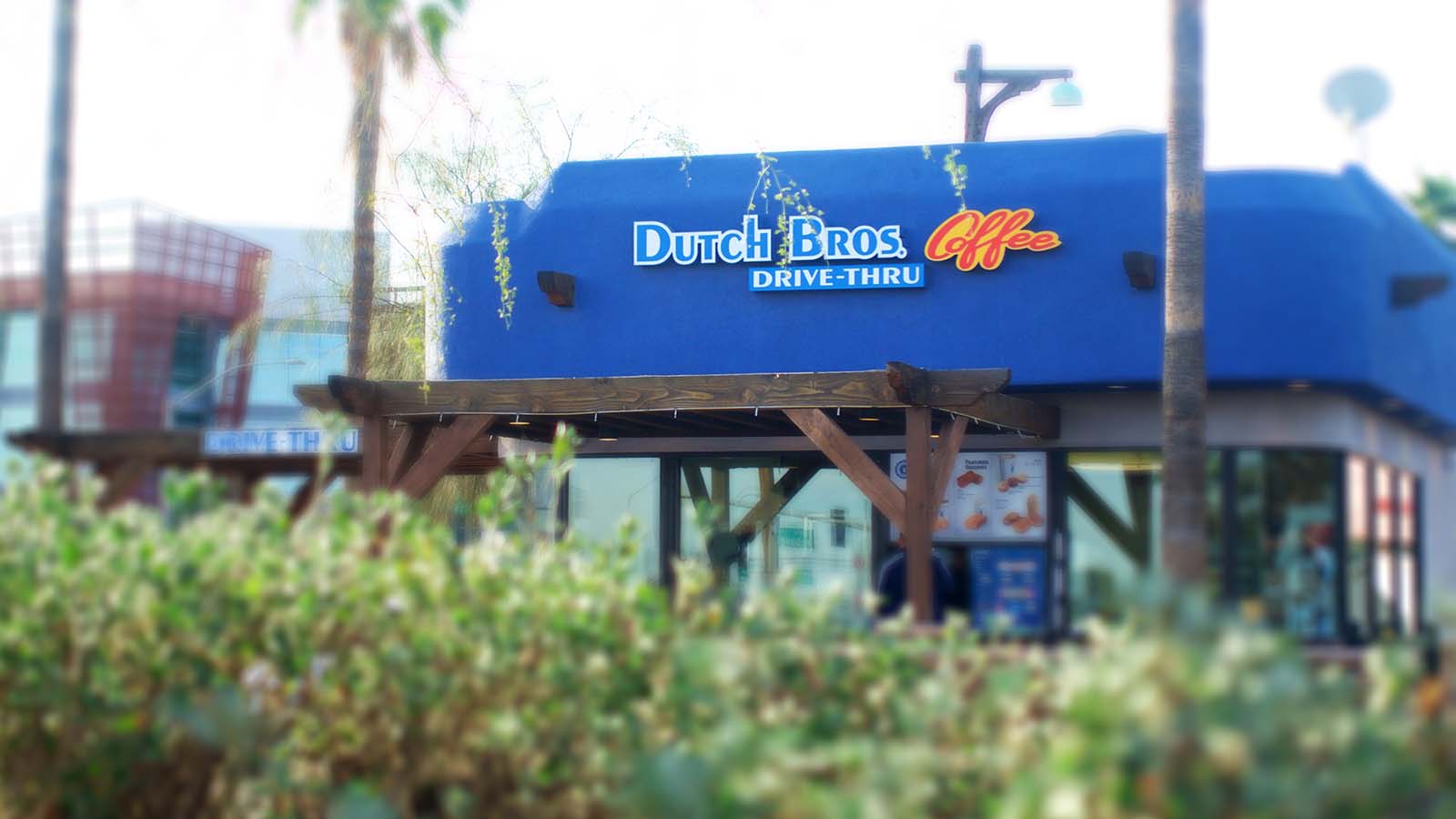Dutch Bros (NYSE:BROS) is an Oregon-based regional coffee and cold beverages chain. The firm recently completed its initial public offering (IPO) of BROS stock to raise funds. Dutch Bros is in the process of becoming a national player, and can use the growth capital as it pushes into fresh new markets such as Texas.

BROS stock started trading on September 15, with the IPO price being $23/share. The deal was well-received however, and shares soon traded around the $40 mark. And that was just the beginning. Over the past few weeks, the stock has ramped up from $40 to $72.
Bears are rushing out to say that BROS stock is massively overvalued. But could they be missing something important? While valuation is certainly a stretch, there are some things that set Dutch Bros apart from the peers.
Different Real Estate/Store Strategy
The average Dutch Bros location is tiny. It’s just a glorified shed with a drive-thru line and perhaps a walk-up area for people that want to order on foot. This saves the company a ton of money. By contrast Starbucks (NASDAQ:SBUX), Dunkin Donuts and the likes have to spend a lot to either buy or lease out large spaces.
Starbucks, in particular, has built its business model around having attractive high-traffic locations that are comfortable places at which to spend an hour or two. Starbucks popularized the idea of the “third place,” an area where customers could work or relax outside of both the home and office. The remote work concept particularly favored Starbucks, as people used the coffee shop as a remote office.
The pandemic has cast some of that advantage into doubt, however. Now Starbucks has had to spend more on cleaning and other post-pandemic costs. Its larger stores require more labor, which is getting more expensive by the day. And it is losing the foot traffic benefit in many locations. As fewer people go to the office or the shopping mall, it reduces demand for Starbucks drinks at its locations in or near those facilities.
By contrast, Dutch Bros and its franchisees can spend far less on real estate. They don’t need to be in the middle of high-traffic areas, nor do they need lavish set-ups to make customers comfortable. Rather, a customer drives through, gets their expensive drink from a tiny building, and immediately leaves. This is a big benefit to the Dutch Bros model, especially in a post-Covid world. So far, the company hasn’t grown to a huge store count yet, but it envisions reaching 4,000 or more eventually, and that’s a reasonable goal given the low capital costs to set up each new store.
Reaching The Younger Generation
Dutch Bros could be viewed as the coffee chain for Generation Z. As our Dana Blankenhorn explained, everything about the chain is aimed at high schoolers and young adults.
The drinks have decidedly trendy names such as Bob Marley and the Candy Cane. The majority of options are cold drinks centered around sweet flavors and bright colors, rather than actual coffee. As Blankenhorn put it: “If Starbucks is an elegant bar, Dutch Bros is an ice cream stand.”
Starbucks has done a masterful job appealing to its demographic. But it may be reaching the peak of its market saturation. SBUX stock just dropped on underwhelming earnings, after all. It’s had to invest heavily in overseas markets such as China to try to keep its growth story alive. Meanwhile, every time Dutch Bros opens a new location, there’s a line of cars around the block waiting to get to try the hot new thing.
Bros Stock Valuation: The Sticking Point
At the current market capitalization, people are paying around $25 million for each existing Dutch Bros location. In isolation, that’s an utterly absurd number. Most restaurant chains go for a small fraction of that.
In theory, two things make up for that. One, each Dutch Bros location is generating $1.7 million in annual systemwide sales on average. That’s a tremendous figure for a company selling coffee out of small locations. Most chains have to spend far more on labor and rent to achieve similar results. Dutch Bros’ 29% store-level contribution profit margin is also far above the industry average.
Still, though, people are paying $25 million per existing store. That’s pretty amazing stuff. The company is currently trading at more than 20x revenues. That’s expensive even for a software company, let alone a restaurant chain. Additionally, the firm is only lightly profitable now on an earnings basis and trades at a P/E ratio well into the triple digits.
BROS Stock Verdict
Everything is right about Dutch Bros stock except the price. The company has the right product, the right demographics, and a differentiated growth strategy to stand out from its coffee and café peers.
Even the ticker symbol is perfect. How could you bet against BROS stock in a meme trading world? Still though, for long-term investors consider waiting for a dip or using options to establish a position. After a scorching run like this one, the caffeine jolt is bound to wear off at least temporarily.
On the date of publication, Ian Bezek did not have (either directly or indirectly) any positions in the securities mentioned in this article. The opinions expressed in this article are those of the writer, subject to the InvestorPlace.com Publishing Guidelines.
Ian Bezek has written more than 1,000 articles for InvestorPlace.com and Seeking Alpha. He also worked as a Junior Analyst for Kerrisdale Capital, a $300 million New York City-based hedge fund. You can reach him on Twitter at @irbezek.
